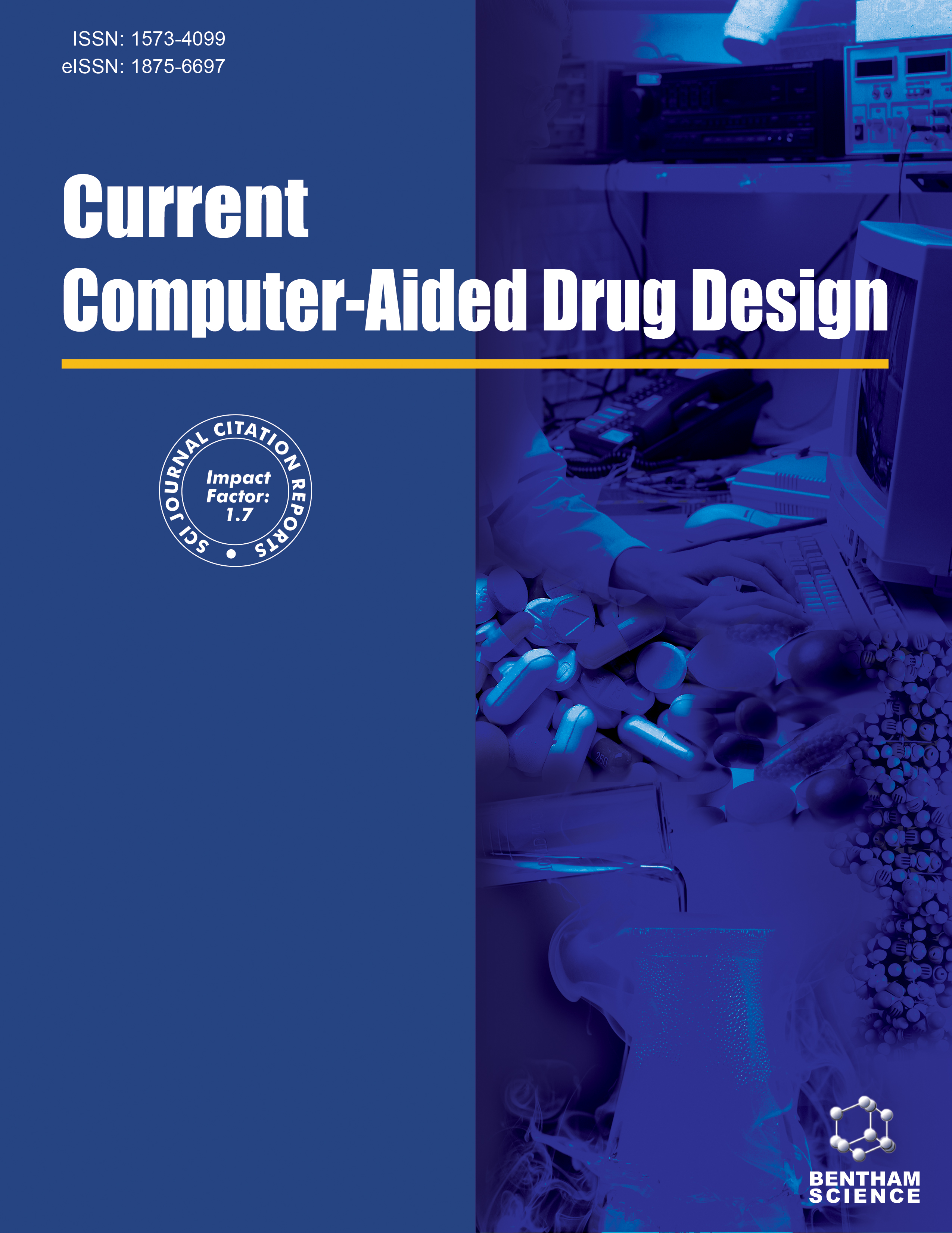- Home
- A-Z Publications
- Current Computer - Aided Drug Design
- Previous Issues
- Volume 6, Issue 2, 2010
Current Computer - Aided Drug Design - Volume 6, Issue 2, 2010
Volume 6, Issue 2, 2010
-
-
Prediction of Cell-Penetrating Peptides Using Artificial Neural Networks
More LessAuthors: Dimitar A. Dobchev, Imre Mager, Indrek Tulp, Gunnar Karelson, Tarmo Tamm, Kaido Tamm, Jaak Janes, Ulo Langel and Mati KarelsonAn investigation of cell-penetrating peptides (CPPs) by using combination of Artificial Neural Networks (ANN) and Principle Component Analysis (PCA) revealed that the penetration capability (penetrating/non-penetrating) of 101 examined peptides can be predicted with accuracy of 80%-100%. The inputs of the ANN are the main characteristics classifying the penetration. These molecular characteristics (descriptors) Read More
-
-
-
Development of Chemical Compound Libraries for In Silico Drug Screening
More LessAuthors: Yoshifumi Fukunishi and Masami LintuluotoChemical compound libraries are the basic database for virtual (in silico) drug screening, and the number of entries has reached 20 million. Many drug-like compound libraries for virtual drug screening have been developed and released. In this review, the process of constructing a database for virtual screening is reviewed, and several popular databases are introduced. Several kinds of focused libraries have been developed. Read More
-
-
-
Advanced PLS Techniques in Chemoinformatics Studies
More LessAuthors: Kiyoshi Hasegawa and Kimito FunatsuMultivariate statistical methods are commonly used in the analysis of quantitative structure-activity/property relationships (QSAR and QSPR, respectively). The partial least squares (PLS) method is of particular interest because it can analyze data containing numerous X variables with strongly collinear and noisy characteristics and can simultaneously model several response variables Y. Furthermore, it can provide us wi Read More
-
-
-
Structure-Guided Design of Antibodies
More LessAuthors: Justin A. Caravella, Deping Wang, Scott M. Glaser and Alexey LugovskoyMonoclonal antibodies capable of recognizing antigens with high affinity and specificity represent a wellestablished class of biological agents. Since the development of hybridoma technology in 1975, advances in recombinant DNA technologies and computational and biophysical methods have allowed us to develop a better understanding of the relationships between antibody sequence, structure, and function. These advances Read More
-
-
-
Recent Progress on Computer-Aided Inhibitor Design of H5N1 Influenza A Virus
More LessAuthors: Xiaoli Guo, Jing-Fang Wang, Yisheng Zhu and Dong-Qing WeiDesign of novel H5N1 inhibitors is currently a research topic of vital importance owing to both a recent pandemic threat by the worldwide spread of H5N1 avian influenza and the high resistance of H5N1 virus to the most widely used commercial drug, oseltamivir-OTV (Tamiflu). There has been much progress in this field recently. This review covers recent work on bioinformatics studies, structure based design, computer modelin Read More
-
Volumes & issues
-
Volume 21 (2025)
-
Volume 20 (2024)
-
Volume 19 (2023)
-
Volume 18 (2022)
-
Volume 17 (2021)
-
Volume 16 (2020)
-
Volume 15 (2019)
-
Volume 14 (2018)
-
Volume 13 (2017)
-
Volume 12 (2016)
-
Volume 11 (2015)
-
Volume 10 (2014)
-
Volume 9 (2013)
-
Volume 8 (2012)
-
Volume 7 (2011)
-
Volume 6 (2010)
-
Volume 5 (2009)
-
Volume 4 (2008)
-
Volume 3 (2007)
-
Volume 2 (2006)
-
Volume 1 (2005)
Most Read This Month
Article
content/journals/cad
Journal
10
5
false
en


